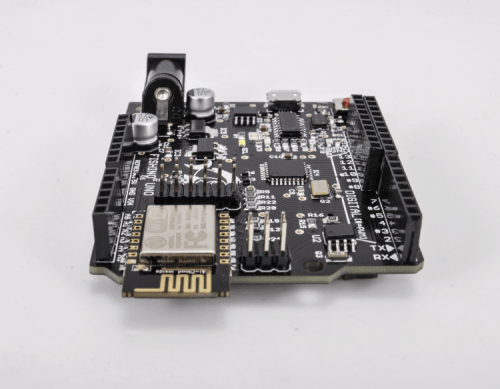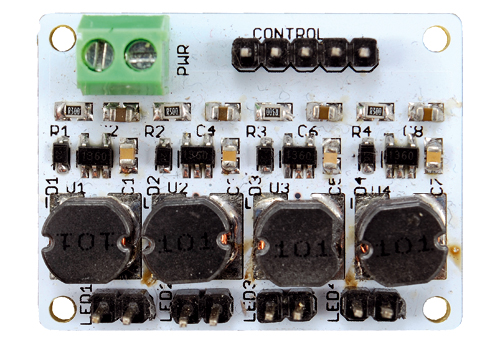The original is not always the best.
Rather than sticking with Raspberry Pi, the innovators at Cliff Cottage are using Asus Tinker Boards. The Tinker Board is simply a better machine. Not perfect, perhaps not even good, but better. A similar sea change may be happening with the Arduino.
The Fishino Uno is yet another Arduino Uno board, in term of connectivity and size. However, it is more than that. It has many features that the Arduino lacks: internet connectivity, large storage capacity using a micro-SD card and an on-board RTC (real-time clock) with battery backup. There is a minimal change to the Arduino form factor, caused by a 7mm wifi antenna overhang.

These improvements make Fishino better suited for home automation systems, than the original Arduino. The WiFi module allows the Fishino to be used as a WiFi station and/or access point, and allows smartphone control even without a WiFi connection.
In summary, some of the characteristics of the Fishino that make it better than the Arduino.
- Fully compatible with Arduino Uno
- WiFi module on board, that can be uses in station mode, access point mode or both
- MicroSD slot on board
- RTC (Real Time Clock) with backup lithium battery on board
- Increased current capacity on 3.3V supply section
- Connectors compatible with breadboards

For further information see: https://www.open-electronics.org/fishino-arduino-become-wireless/
Shield
A shield is a printed circuit board that fits on top of the main Arduino (or Fishino) board, offering additional attributes to the system. Here we will mention two that can be used in home automation.
Fishino Octopus
PWM – For the next few minutes please don’t ask what PWM means. Pretend that it refers to Portland International Jetport, or Peter Wallace Myrick or anything else … Just accept that there is something called PWM, and that it can be important.
Some motors, including those on sewing machines, require variable speed. In the past, a rheostat was used to adjust the electrical current flowing through it. This wastes power because it uses the same amount of energy regardless of the motor speed. What isn’t used to power the motor is released as heat.
What was needed was an efficient power adjusting tool. PWM solved this problem. On an Arduino / Fishino Uno there are only six PWM outputs. Many times this is far too few.
The Octopus expansion shield allows 16 PWM outputs and 16 additional digital inputs or outputs. Up to 8 of these can overlap, allowing a system to manage 128 PWM outputs and 128 digital inputs or outputs.

Fishino Colibri
Engineers do not always have the greatest understanding of how the natural world functions. Colibri means hummingbird, and surprisingly, it is not a fish. An octopus isn’t a fish either, but we won’t force the issue.
The Colibri is used to provide power to RGB LED lighting. These use 4 channels to provide a full range of colours using PWM control signals.

By the way, PWM stands for Pulse Width Modulation.

